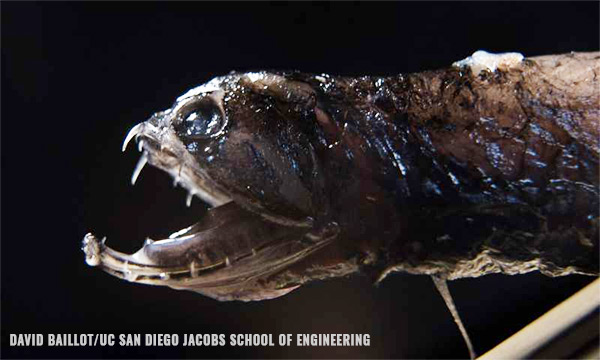A different kind of Jaws: Scientists discover a tiny new species of shark that glows in the dark
04/17/2020 / By Arsenio Toledo

Scientists have discovered a new species of shark lurking off the Gulf of Mexico. However, this isn’t a terrifyingly large shark that can eat humans whole. This shark is small and can glow in the dark.
The new shark, known as the American pocket shark (Mollisquama mississippiensis), is only the second species of pocket shark to be identified by marine scientists. It was first discovered in the central Gulf of Mexico in 2010 and it wasn’t classified until 2019. The specimen of American pocket shark marine scientists were able to retrieve was only 5.5 inches long and resided deep underneath the ocean at a depth of 1,100 feet below the surface.
Pocket sharks are an enigmatic genus of deepwater sharks known for their small size. Only two specimens of pocket shark have ever been collected, one in 1979 and the American pocket shark in 2010.
“Both are separate species, each from separate oceans. Both are exceedingly rare,” said Mark Grace, biologist at the National Oceanic and Atmospheric Administration (NOAA). Grace conducted his study on the American pocket shark with the help of researchers from Tulane University.
American pocket shark produces bioluminescence
Research on the American pocket shark began in 2013, when Grace first came across it while examining specimens captured by NOAA during a 2010 mission to study sperm whales. Grace and the researchers from Tulane began studying the shark. They used X-ray imaging and high-resolution CT scans to examine both the inside and outside of the pocket shark. They also received help from the European Synchrotron Radiation Facility (ESRF) in France. The ESRF had an X-ray that was 100 billion times brighter than the X-rays Grace and the other researchers used.
Using this data, the researchers identified the specimen as a pocket shark in 2015. Furthermore, Grace was able to determine the location of the American pocket shark’s photophores, or organs that are used specifically to create bioluminescence. Its photophores are located all over its body. This allows the pocket shark to “glow in the dark.” The photophores produce a bioluminescent fluid that helps the shark see in the darkness of the deep ocean.
Furthermore, Grace and the other researchers used the X-ray and CT scan images to distinguish the differences between the American pocket shark and the first pocket shark specimen to be discovered, the Mollisquama parini.
M. parini was discovered in the Nazca Submarine Range, off the coast of Chile, in 1979. It wasn’t properly categorized until 1984. It is currently in a museum in St. Petersburg, Russia.
Both species have two small pockets that produce the bioluminescent fluid that makes it light up on each side of its body near its gills. The American pocket shark also had fewer vertebrae, different teeth and it had photophores all over its body.
Henry Bart, director of Tulane’s Biodiversity Research Institute, emphasized how there is still much to be learned, not just about pocket sharks, but about the deep seas that they inhabit. (Related: Why do deep-sea dragonfish have invisible teeth?)
“The fact that only one pocket shark has ever been reported from the Gulf of Mexico, and that it is a new species, underscores how little we know about the Gulf – especially its deeper waters – and how many additional new species from these waters await discovery.”
Sources include:
Tagged Under: American pocket shark, animals, deep ocean, deep sea, Ecology, environment, Gulf of Mexico, marine life, Oceans, pocket shark, research, wildlife
RECENT NEWS & ARTICLES
OceanHealthNews.com is a fact-based public education website published by Ocean Health News Features, LLC.
All content copyright © 2018 by Ocean Health News Features, LLC.
Contact Us with Tips or Corrections
All trademarks, registered trademarks and servicemarks mentioned on this site are the property of their respective owners.



















